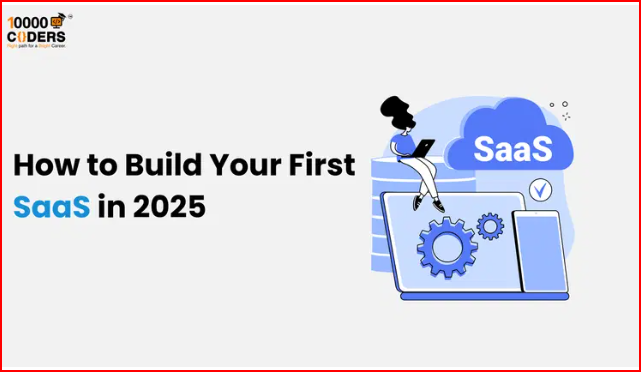Introduction
Building a SaaS (Software as a Service) application in 2025 requires a strategic approach that combines modern technology, scalable architecture, and business acumen. This guide will walk you through the essential steps to create your first successful SaaS product.
Understanding SaaS Fundamentals
What is SaaS?
SaaS is a software distribution model where applications are hosted by a service provider and made available to customers over the internet. Key characteristics include:
- Subscription-based pricing
- Cloud-hosted infrastructure
- Multi-tenant architecture
- Regular updates and maintenance
- Scalable user base
Why Build a SaaS in 2025?
- Growing market demand
- Lower barriers to entry
- Recurring revenue model
- Global reach potential
- Scalable business model
Planning Your SaaS Product
1. Market Research and Validation
// Example of a simple market research data structure
const marketResearch = {
targetMarket: {
size: "10M+ potential users",
demographics: ["Small businesses", "Startups", "Enterprise"],
painPoints: [
"High software costs",
"Complex implementation",
"Limited scalability"
]
},
competitors: [
{
name: "Competitor A",
strengths: ["Brand recognition", "Feature-rich"],
weaknesses: ["High pricing", "Complex UI"]
}
],
uniqueValueProposition: "Simple, affordable, and scalable solution"
};
2. MVP (Minimum Viable Product) Definition
// Example MVP feature set
const mvpFeatures = {
coreFeatures: [
"User authentication",
"Basic dashboard",
"Essential functionality",
"Payment integration"
],
niceToHave: [
"Advanced analytics",
"Custom integrations",
"White-label options"
],
futureFeatures: [
"AI capabilities",
"Mobile apps",
"Enterprise features"
]
};
Technical Architecture
1. Modern Tech Stack
// Example tech stack configuration
const techStack = {
frontend: {
framework: "Next.js",
stateManagement: "Redux Toolkit",
uiLibrary: "Tailwind CSS",
testing: "Jest + React Testing Library"
},
backend: {
runtime: "Node.js",
framework: "Express.js",
database: "PostgreSQL",
cache: "Redis"
},
infrastructure: {
cloud: "AWS",
containers: "Docker",
orchestration: "Kubernetes",
ciCd: "GitHub Actions"
}
};
2. Multi-tenant Architecture
// Example multi-tenant database schema
const tenantSchema = {
tenants: {
id: "UUID",
name: "String",
subscription: {
plan: "String",
status: "String",
features: ["Array"]
}
},
users: {
id: "UUID",
tenantId: "UUID",
role: "String",
permissions: ["Array"]
},
data: {
tenantId: "UUID",
// Tenant-specific data
}
};
Development Process
1. Setting Up Development Environment
# Project initialization
npx create-next-app@latest my-saas-app
cd my-saas-app
# Install dependencies
npm install @reduxjs/toolkit react-redux
npm install @prisma/client @trpc/server @trpc/client
npm install tailwindcss postcss autoprefixer
npm install @stripe/stripe-js @stripe/react-stripe-js
# Initialize Tailwind CSS
npx tailwindcss init -p
2. Authentication System
// Example authentication setup with NextAuth.js
import NextAuth from 'next-auth';
import { PrismaAdapter } from '@next-auth/prisma-adapter';
import prisma from '@/lib/prisma';
export default NextAuth({
adapter: PrismaAdapter(prisma),
providers: [
GoogleProvider({
clientId: process.env.GOOGLE_ID,
clientSecret: process.env.GOOGLE_SECRET,
}),
EmailProvider({
server: process.env.EMAIL_SERVER,
from: process.env.EMAIL_FROM,
}),
],
callbacks: {
async session({ session, user }) {
session.user.tenantId = user.tenantId;
return session;
},
},
});
3. Subscription Management
// Example Stripe subscription integration
import Stripe from 'stripe';
const stripe = new Stripe(process.env.STRIPE_SECRET_KEY);
async function createSubscription(customerId: string, priceId: string) {
const subscription = await stripe.subscriptions.create({
customer: customerId,
items: [{ price: priceId }],
payment_behavior: 'default_incomplete',
expand: ['latest_invoice.payment_intent'],
});
return subscription;
}
Deployment and Infrastructure
1. CI/CD Pipeline
# Example GitHub Actions workflow
name: CI/CD Pipeline
on:
push:
branches: [ main ]
pull_request:
branches: [ main ]
jobs:
build:
runs-on: ubuntu-latest
steps:
- uses: actions/checkout@v2
- name: Setup Node.js
uses: actions/setup-node@v2
with:
node-version: '18'
- name: Install dependencies
run: npm ci
- name: Run tests
run: npm test
- name: Build
run: npm run build
- name: Deploy to AWS
run: npm run deploy
2. Monitoring Setup
// Example monitoring configuration
const monitoring = {
errorTracking: {
service: "Sentry",
config: {
dsn: process.env.SENTRY_DSN,
environment: process.env.NODE_ENV
}
},
performance: {
service: "New Relic",
config: {
licenseKey: process.env.NEW_RELIC_LICENSE_KEY,
appName: "My SaaS App"
}
},
logging: {
service: "CloudWatch",
config: {
region: process.env.AWS_REGION,
logGroup: "/my-saas-app"
}
}
};
Business and Growth Strategies
1. Pricing Models
// Example pricing tiers
const pricingTiers = {
starter: {
price: 29,
features: [
"Basic features",
"5 users",
"Email support"
]
},
professional: {
price: 99,
features: [
"All starter features",
"Unlimited users",
"Priority support",
"Advanced analytics"
]
},
enterprise: {
price: "Custom",
features: [
"All professional features",
"Custom integrations",
"Dedicated support",
"SLA guarantee"
]
}
};
2. Growth Metrics
// Example metrics tracking
const metrics = {
acquisition: {
mrr: 0, // Monthly Recurring Revenue
arr: 0, // Annual Recurring Revenue
cac: 0, // Customer Acquisition Cost
ltv: 0 // Lifetime Value
},
engagement: {
dau: 0, // Daily Active Users
mau: 0, // Monthly Active Users
retention: 0,
churn: 0
},
financial: {
revenue: 0,
expenses: 0,
profit: 0,
margin: 0
}
};
Security and Compliance
1. Security Measures
// Example security configuration
const securityConfig = {
authentication: {
mfa: true,
sessionTimeout: 3600,
passwordPolicy: {
minLength: 12,
requireSpecialChars: true,
requireNumbers: true
}
},
dataProtection: {
encryption: {
atRest: true,
inTransit: true
},
backup: {
frequency: "daily",
retention: "30 days"
}
},
compliance: {
gdpr: true,
hipaa: false,
soc2: true
}
};
Launch and Marketing
1. Launch Checklist
// Example launch checklist
const launchChecklist = {
technical: [
"Load testing completed",
"Security audit passed",
"Backup system verified",
"Monitoring in place"
],
business: [
"Pricing finalized",
"Terms of service ready",
"Privacy policy updated",
"Support system ready"
],
marketing: [
"Website live",
"Blog content ready",
"Social media accounts set up",
"Email marketing configured"
]
};
Conclusion
Building a SaaS application in 2025 requires a combination of technical expertise, business acumen, and strategic planning. Focus on creating a scalable, secure, and user-friendly product while maintaining a clear vision for growth and sustainability.
Key Takeaways
- Start with thorough market research
- Build a solid MVP
- Implement scalable architecture
- Focus on security and compliance
- Plan for growth and scaling
- Monitor key metrics
- Maintain customer focus
- Iterate based on feedback
🚀 Ready to kickstart your tech career?





Comments